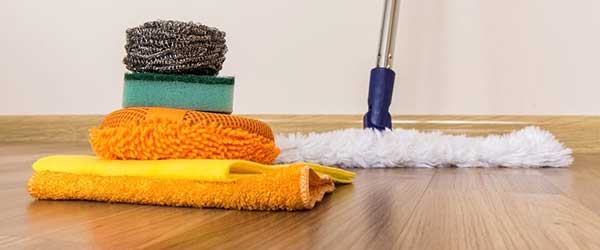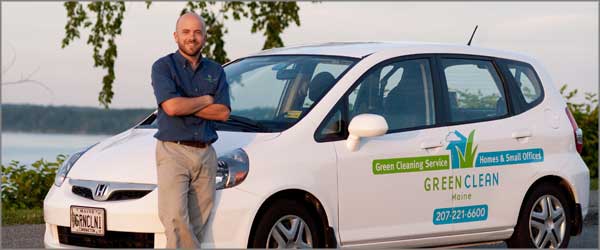7 steps to control costs which affect your gross income potential
People enter the residential cleaning business for a variety of reasons. Some to make a little extra income while going to school, for instance, while for others the money they make is their livelihood. But few expect to get rich cleaning houses.
Well, house cleaners might want to re-think that attitude. There are considerable possibilities and opportunities in house cleaning. One of the reasons is that demand for house cleaning services is growing.
According to the U.S. Census Bureau, as of 2015 there are approximaly 124.6 million households in the U.S., and that number is expected to increase by about 15 percent in the next decade. Most of these households are two income families–both husband and wife work–or are single-parent homes with that single parent working. For these people, hiring a house cleaning service is not a luxury but a necessity. And it is because of this that the growth potential in residential cleaning is so large.
Of course, a lot of success is up to you. According to Jean Hanson, a house cleaning service “guru,” in order to make “big money” in the residential cleaning business, the first step is visualizing it. In other words, you must see yourself making the large amounts of money you want to earn.
She then says it’s just a matter of hard work, tenacity, determination, and math. According to Hanson, for a residential cleaning company to earn a million dollars or more annually, it would need to clean about 31 homes per day.* That’s a lot, but there are now several house cleaning companies in the U.S. earning a million dollars or more per year, which says this is certainly possible.
Plus, many residential cleaning companies expand into other cleaning related services such as nightly janitorial work, window cleaning, carpet care, tile and grout cleaning, etc. But the bottom line is that with the desire, the possibilities are there.
But Don’t Forget the Outflow
What Hanson is discussing primarily is the gross income potential of a residential cleaning service. However, there is another side of the coin which grows in importance as your business develops and that is keeping tabs on expenses. While labor will likely be your single largest expenditure, there are other costs that will surface as the business gets larger including fuel, cars, marketing, insurance, and of course cleaning products.
Because they are so necessary to day-to-day operations, it is cleaning products and their costs that I would like to discuss here. If unchecked, these costs can grow far larger than they should. Fortunately, there are steps residential cleaning service owners and managers can take to keep costs in line and even more importantly, reduce janitorial supply costs.
Among these steps are the following:
1. Know what you’re buying: The first step in reducing cleaning supply costs is to know and evaluate exactly what you are purchasing now. Some items are purchased that are not being used. You may also discover that you are purchasing more than one cleaning solution that is used for the same task. As we will discuss next, it is important to consolidate these items and minimize the number of items being purchased overall. That way you can keep better track of purchases.
2. Product consolidation: Traditionally, cleaning solutions were developed for a specific cleaning purpose. However, we now have many cleaning solutions that can multi-task. Eliminating all the “single task” cleaning solutions will not only help eliminate redundancies, which will result in a cost savings, but by selecting one product and purchasing it in larger quantities, you will likely be able to take advantage of rebates and product discounts.
3. Measure and monitor: Install an auto-dilution system and require all staff to use it each day. These systems offer many benefits but at the top of the list is reducing chemical waste. Related to this, track chemical and product usage. It is important to have a good idea of how much cleaning solution, for instance, is being used each week and how much is being purchased each month.
4. Buy large: We referenced this earlier but it is so important, will expand on it here. Always select cleaning solutions in large containers and quantities such as five-gallon containers or in cases. While this costs more initially, long-term the savings can be significant.
5. Check dilution ratios: Dilution ratios are listed on the label of professional cleaning products. This is important information that is often overlooked. If one general cleaner must be diluted at one part chemical and three parts water, and another general cleaner diluted at one part chemical and six parts water, then the second product will prove much more economical.
6. Group purchasing: For those residential cleaning companies already in the “millionaire bracket” or getting close, another opportunity materializes. They can take advantage of what are called group purchasing organizations that negotiate special pricing arrangements directly with manufacturers of janitorial products. In exchange for more and larger volume purchases, the manufacturer passes on product savings through your current janitorial distributor.
7. Compatible products: This might be more important for workers performing nightly janitorial work, but owners of residential cleaning should know that some janitorial chemical manufacturers engineer their products so that they work together. There is a chemical synergy among the products, which makes them all perform more effectively, which can reduce labor costs.
Finally, it is very important to keep an open mind when it comes to cleaning product selection. As I write this, many industry professionals are preparing for the upcoming ISSA tradeshow. I suggest going to the show and examining some of the new products, tools, and equipment being introduced. See if these new products may improve worker productivity, be safer and healthier to use, or reduce costs. And be sure to bring some of your staff directly involved in cleaning to the show as well. These are the folks that will be using these new products and you want them in on the buying decisions from the start.
Terry Sambrowski is executive director of National Service Alliance (NSA), a group purchasing organization that helps larger cleaning contractors reduce their costs for cleaning equipment and supplies. She can be reached at her organizations website, http://www.nansa.org/
*Based on an average charge of $125 per home.
See also: How to Start Your Own Cleaning Business in 6 Steps
 Cleaning Business Today is a publication of Tom Stewart and Derek Christian, who also partner in Castle Keepers House Cleaning, one of the fastest growing professional house cleaning services in the US.
Cleaning Business Today is a publication of Tom Stewart and Derek Christian, who also partner in Castle Keepers House Cleaning, one of the fastest growing professional house cleaning services in the US.
For more articles, subscribe to our newsletter!





